Last updated on May 3rd, 2023
Monkeys are an extremely popular animal. They are often some of the most popular to see in zoos or in pop culture. They are a fascinating animal that have references in many different cultures, and these primates continue to capture the imagination of children generation after generation. With these facts about monkeys, we wish to educate you about these beautiful and interesting creatures.
Monkeys have earned that reputation as they are some of the most interesting creatures in the animal kingdom. Even if you loved them since reading your first “Curious George” book as a child, there is always more to learn about these amazing animals!
Facts about monkeys
1. The word “monkey” is thought to come from a Germanic root word meaning “to mimic.”
2. Monkeys are divided into two main groups: New World monkeys and Old World monkeys. New World monkeys are found in Central and South America, while Old World monkeys are found in Africa and Asia. These monkey species have some notable distinctions as a whole that shows a branch-off in evolution.
3. Only New World monkeys have prehensile tails. While Old World monkeys have tails, they don’t have the same gripping ability that those in the New World enjoy.
4. Most monkey species are arboreal, meaning they live in trees. This provides safety from most predators, especially with large troops.
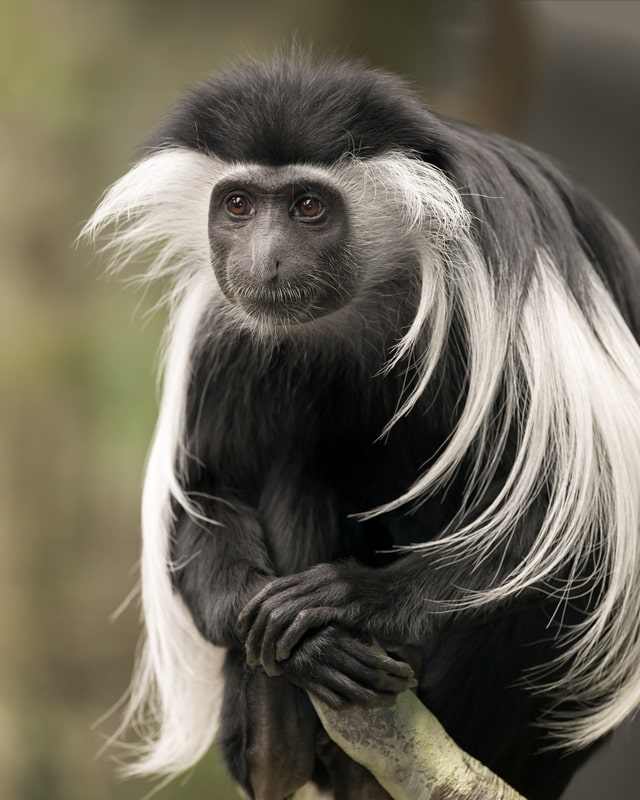
5. There are a few exceptions to this rule, however, such as the baboon which lives on the ground in Africa. Monkeys living on the ground tend to be very fast or very large to compensate for the more dangerous living situation.
6. Monkeys are omnivores, meaning they eat both plants and animals. Their diet includes fruits, leaves, insects, eggs and small animals. The diet can vary based on the specific species and where they are found.
7. Monkeys live in tropical and subtropical regions and are native to 3 different continents. They are native to tropical areas in Central and South America, Africa, Asia and New Guinea.
8. Monkeys are generally considered to be intelligent creatures and have an active IQ that is the equivalent of 3-year old toddlers. This means monkeys can solve basic puzzles and even get basic abstract concepts to solve those puzzles when tested.
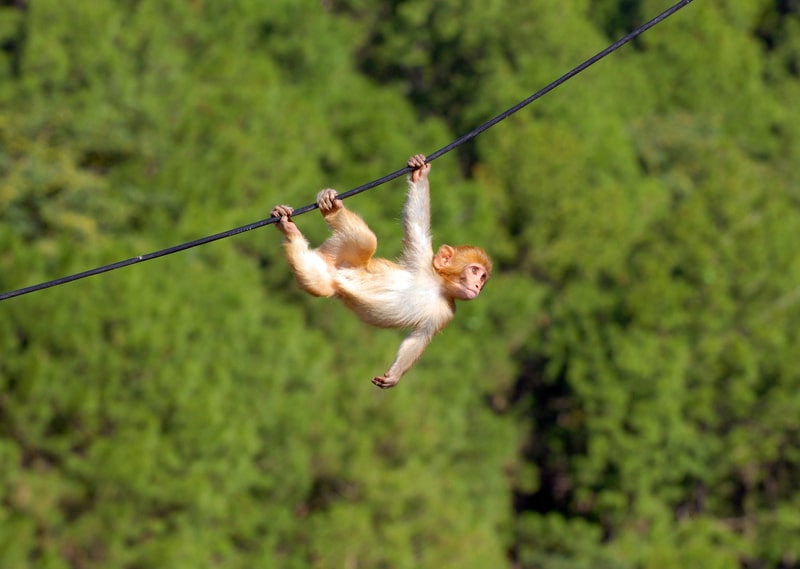
9. Primates are characterized by having opposable thumbs, which allows them to grip objects and tools.
10. Monkeys are intelligent creatures and have been known to use tools to help them with tasks such as opening coconuts and rotten wood to get to termites. This distinctive ability to think and abstract makes them unique compared to most animals in the animal kingdom. They have been observed attempting to use tools similar to humans in some cases after viewing them (such as fishing spears).
11. Some monkey species are capable of learning and using sign language to communicate with humans. This among other monkey facts is certainly worth remembering.
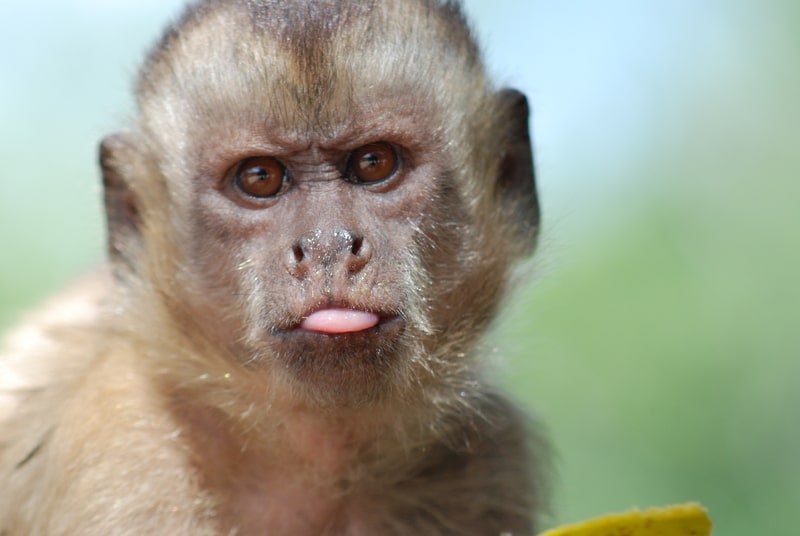
12. Monkeys have many facial expressions similar to humans, but they don’t mean the same thing! Grinning, yawning, and head bobbing may look cute but they’re actually aggressive body language!
13. The average lifespan of a monkey in the wild is about 20 years, but some monkeys have been known to live up to 40 years or more in captivity.
14. Monkeys and apes are members of the primate order, which also includes lemurs, lorises, tarsiers, and humans.
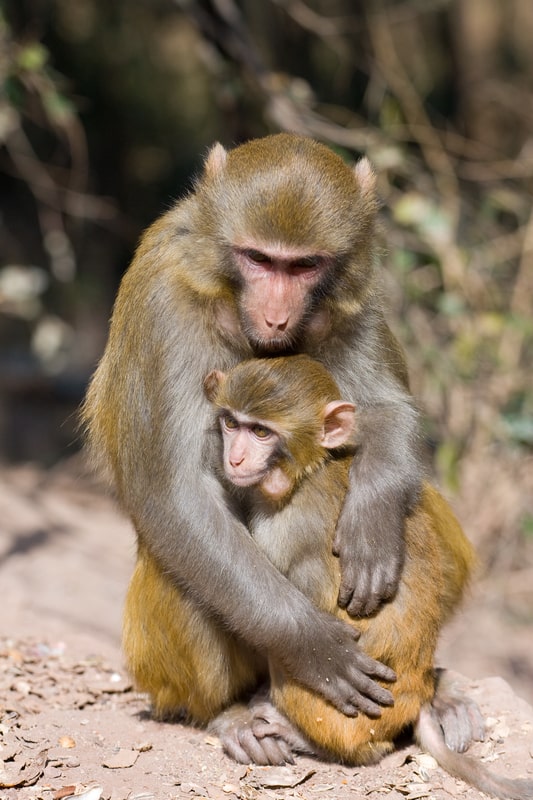
15. The common action of grooming is actually a sign of affection among monkeys. This can be between family members, troop members, mates, or even a way for quarreling monkeys to make up with one another.
16. There are nocturnal night monkeys in South Africa that sleep a stunning 17 hours a day, choosing to be active for only the left over 7 hours of night. Good thing they’re in the trees and off the ground from predators!
17. Although they belong to the primate family like humans, a monkey’s brain is only about one-third the size of a human’s, which is still large by the standards of the animal kingdom.
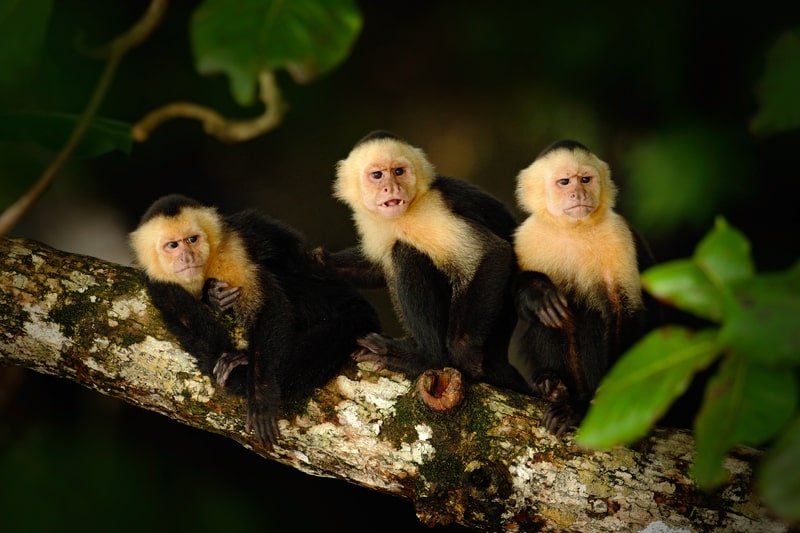
18. While most monkeys have tails, there are a few species of tailless monkeys like the Barbary macaque and the capuchin.
19. There is some evidence that monkeys may be able to recognize their own reflection in a mirror, a trait that very few animals actually show. Even cats and dogs don’t have this ability to recognize their own reflection. On this list of amazing monkey facts, this fact draws our attention to their human like behaviour.
20. The smallest monkey in the world is the pygmy marmoset, which can be a stunningly tiny 5 inches, or 13 cm, long not including their tail. They are found in the Amazon.
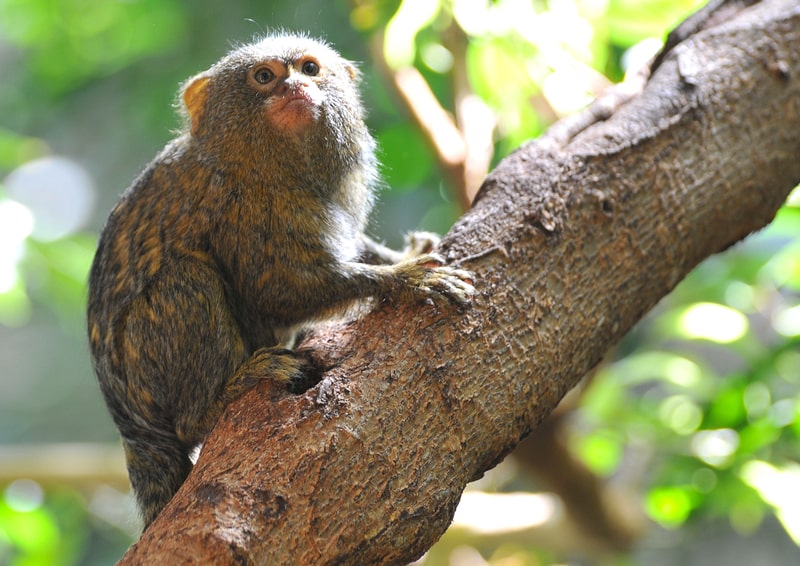
21. The largest monkey in the world is the mandrill, which can weigh up to 77 pounds (35 kg) and grow to be 3 feet (90 cm) long. That’s a big monkey! It is easily recognizable by its bright blue and red face and enormous size. These shy monkeys really stick out, but prefer to be left alone and are found only in equatorial African rain forests. They are mainly worried about leopards as predators.
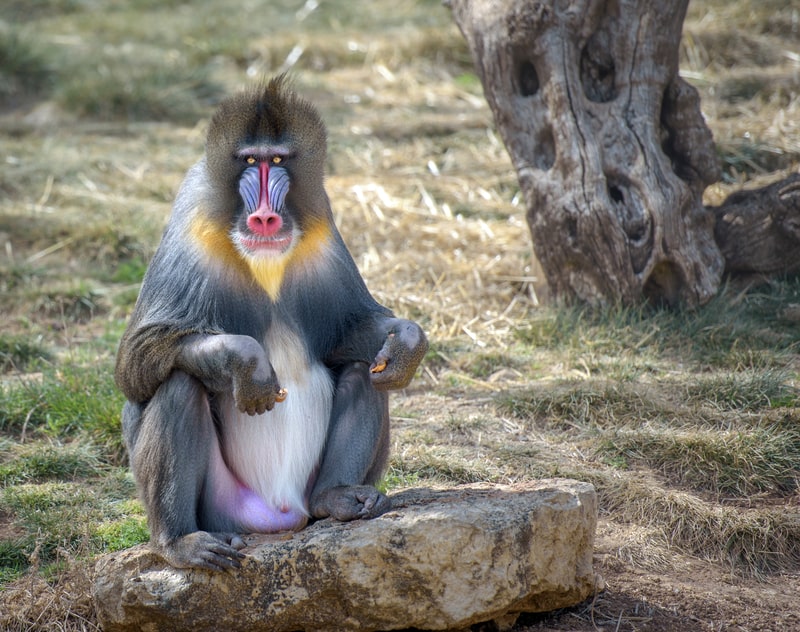
22. Monkeys often not only sleep high up in the trees, but do so while sitting straight up! The tail helps with balance, but there’s still some mystery as to how they can do this while asleep.
23. Monkeys use both their hands and feet for grasping, and their tails for balance. Their feet and hands are more versatile as they can all be used for gripping, swinging, and otherwise making their way around.
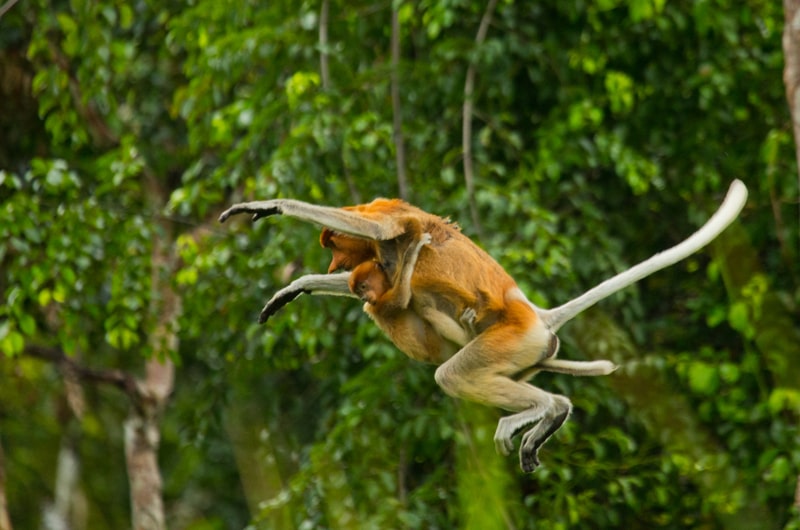
24. The gestation period (pregnancy) for most monkey species is around five to six months.
25. Old World monkeys fill their cheeks with food while scrounging and hold it until they find a safe place to eat. So if you see a monkey with puffed out cheeks, chances are they’re looking for a safe place to have lunch.
26. Monkeys are preyed upon by a variety of predators, including birds of prey, snakes, jungle cats, and dogs. The best defenses tend to be sleeping in trees and being in large troops, but some are also bigger, stronger, or faster to give them an extra edge to survive in tough environments.
27. Monkeys are known to be hosts of a number of different parasites, including ticks, mites, lice and fleas. Because of the relatively close proximity in the animal kingdom to humans they can also carry diseases that can transfer to humans in some cases.
28. Spider monkeys get their name because of the unusually long arms, legs, and tail cause them to look especially spindly, drawing the comparison to spiders. Spider monkeys do not have opposable thumbs. They are known to have good memory and are very intelligent.
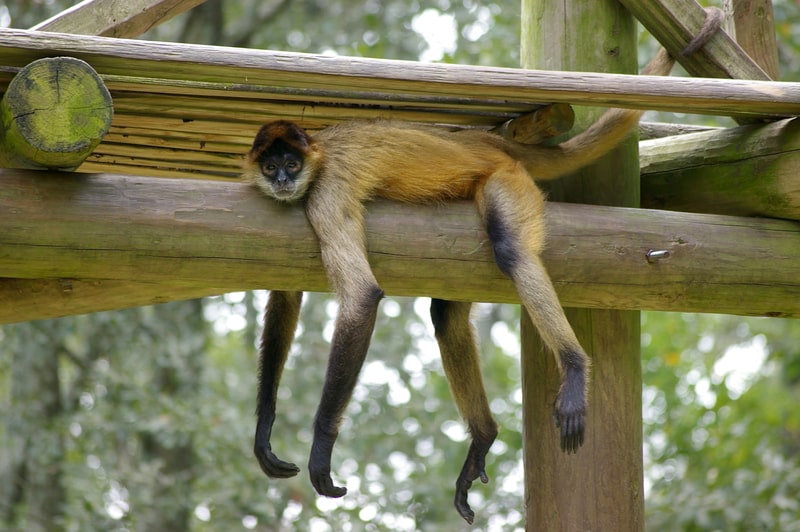
29. Hainan gibbons are the rarest monkeys in the world as they are only found on a single tropical island of Hainan. In 1970 there were only 10 left in the world and even now under protection the estimated population is less than 30.
30. The Gelada monkey is the only primate that is known to graze on grasses, like a cow. They have a special stomach that allows them to process the grass better than other species of primates. As this list of monkey facts is progressing, we are getting to know monkeys like never before.
31. The proboscis monkey gets its name from the large, bulbous nose that males have. This nose is thought to attract females for mating purposes. Basically the bigger the nose, the more attractive the male.
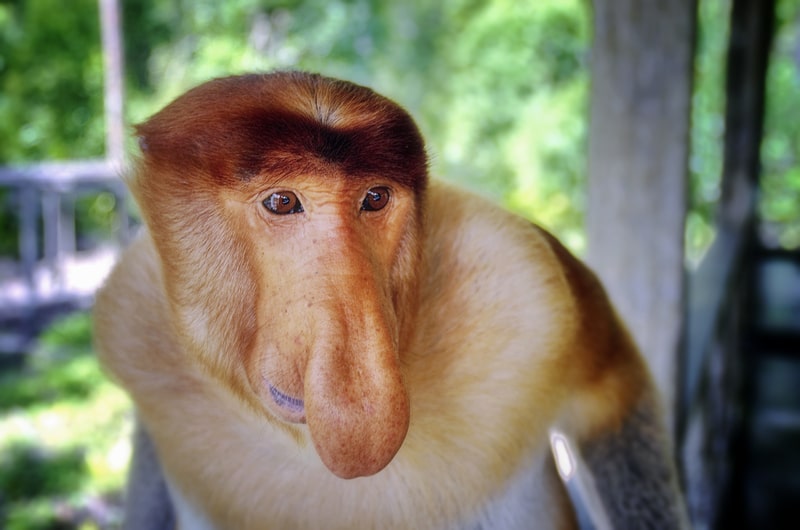
32. Proboscis monkeys have partially webbed toes and fingers which allow them to do something that very few other monkeys can do: they can swim. If you want a chance to catch this rare sight, you’ll need to visit Borneo, as they are found in small pockets of the island split by Indonesia, Malaysia, and Brunei, respectively.
33. The blue monkey actually doesn’t have blue fur despite what the name suggests, though its greyish skin can sometimes appear a shade of grey-blue due to the lack of fur on the face.
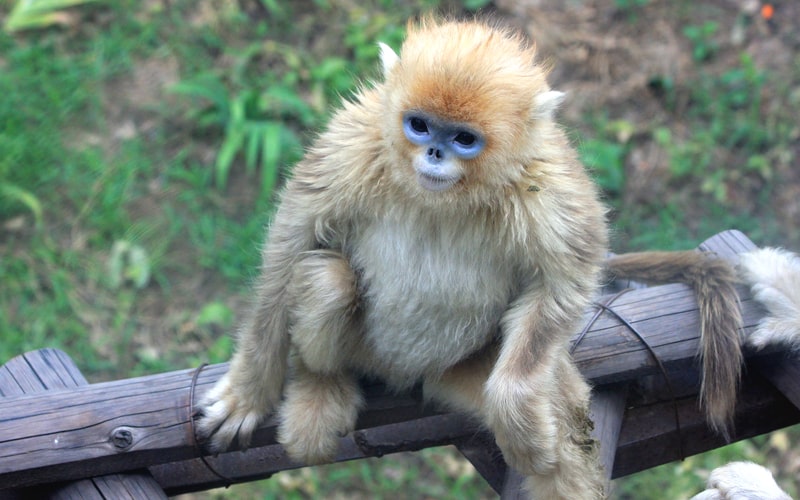
34. The golden snub-nosed monkey is one of the most endangered primates in the world, with only around 2,000 individuals remaining in the wild.
35. The golden snub-nosed monkey is furriest monkey in the world, which is due to them needing extra fur to keep warm because of their climate, which are the snowy mountains of southwest China.
36. The red-shanked douc langur is a brightly colored monkey that is native to Vietnam, Laos, and Cambodia. Often considered one of the cutest monkeys out there, the bright red running from ankle to knee (or elbow to hand) is super distinctive.
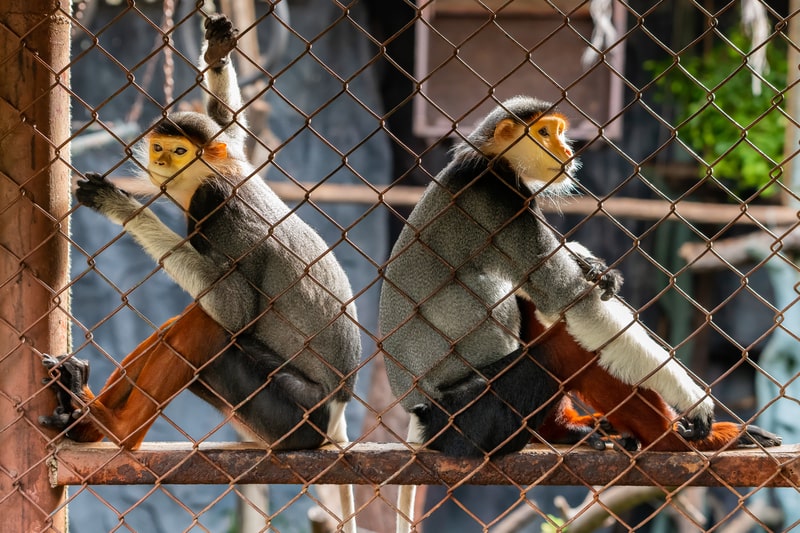
37. Male monkeys are usually larger than females and have more muscular bodies and distinctive features in order to attract a mate or fight off other males competing for mates or control of the troop.
38. Males also have larger canines, which they use for eating meat or often while fighting with other male monkeys. These larger teeth can appear fang-like when put on display to warn off an approaching opponent or potential threat.
39. The black-and-white ruffed lemur is a critically endangered species of primate that is only found on the island of Madagascar. Lemurs are close cousins to monkeys and may have come from a common ancestor, but being isolated to the island of Madagascar allowed them to evolve a different direction.
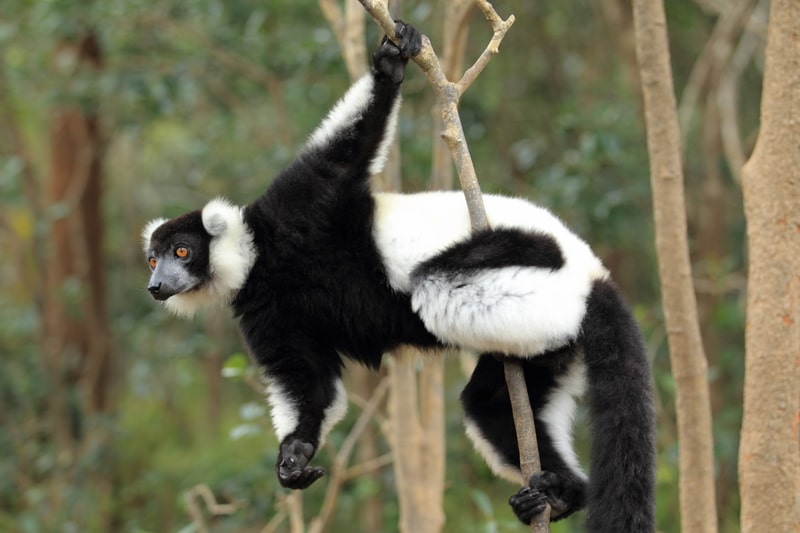
40. Females typically give birth to one or two offspring at a time. These baby monkeys are born completely furry and can open their eyes from day one.
41. They are also able to cling to their mother’s fur, which helps them stay close by for the first few weeks of life. Most mothers will have their babies cling to their backs during those early weeks.
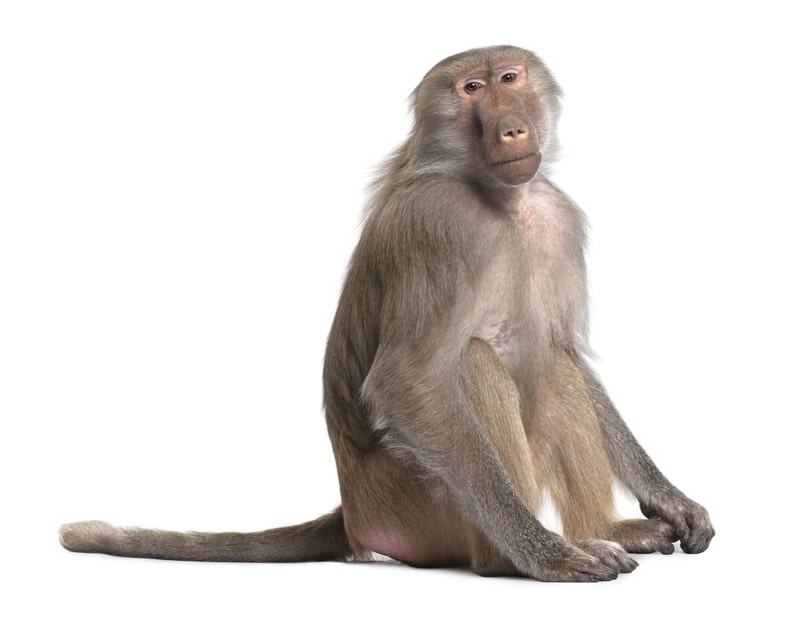
42. The Hamadryas baboon is a species of monkey that is found in the deserts and savannas of Africa. They tend to be found in the Horn of Africa, and were once revered in Egypt as these monkeys were seen as representatives of the Egyptian god of learning.
43. Monkeys have unique fingerprints, just like humans. While this would seem strange, fingers with fingerprints (and thus aren’t completely smooth) can grip better and more firmly than smooth skin fingers. This fact about monkeys signifies the importance of physical characteristics that are important for doing day to day tasks.
44. Monkeys made it to space before humans. This was because a Rhesus Monkey, who was named Albert the First, was sent up by NASA to test if humans could make it to space and come back safely.
45. While there are many species of monkeys that see color very well, especially those that tend to have bright coloration, there are also many species of monkeys that only see in black and white and are effectively color blind. Share this fact about monkeys with your friends and family. You can use the social sharing button placed at the bottom right of this page.
46. The Vervet monkey is a common species of monkey that is found throughout sub-Saharan Africa and are known for showing strange affection for many negative human traits like anxiety, hypertension, and even alcohol use (and in some cases, dependency).
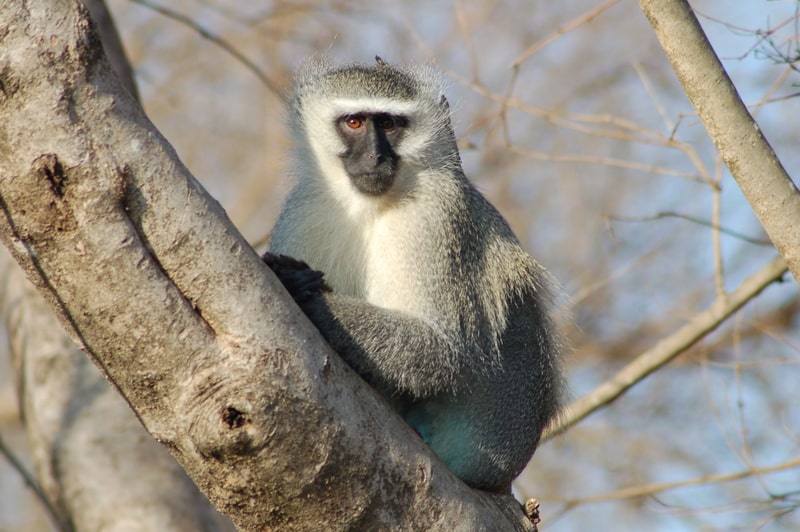
47. Monkeys are social creatures and live in groups called troops. The size of a troop varies depending on the species, but can range from just a few individuals to several hundred.
48. Monkeys have multiple ways of communicating with one another, and will use a combination of facial expressions, vocalizations, body postures and touching.
49. Many monkey species are endangered due to habitat loss, hunting, and the (often illegal) pet trade.
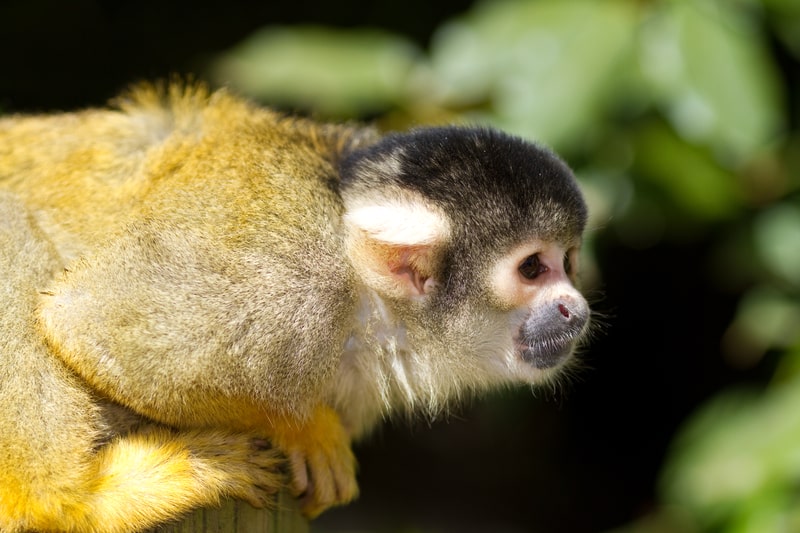
50. The squirrel monkey is a very small species of monkey that is found in the tropical forests of Central and South America and is aptly named based on its tiny size and ability to move quickly through the trees.
51. The Capuchin monkey is a species of New World monkey that is found in Central and South America and is well-known for appearing in entertainment. Many trained monkeys appearing in TV shows or the traditional “Carnival Organ Grinder” street entertainers will be Capuchins.
52. The three most common species of monkeys are the grivet, the rhesus macaque, and the crab-eating macaque. These types of monkeys have thrived in the wild are do well over larger areas of habitat.
53. There’s only one species wild monkey found in Europe and that’s the Barbary Macaque, which is not native to Europe but was introduced to Gibraltar and that wild population is still there. However, in all their habitats, including northern Algeria and Morocco, these monkeys are endangered.
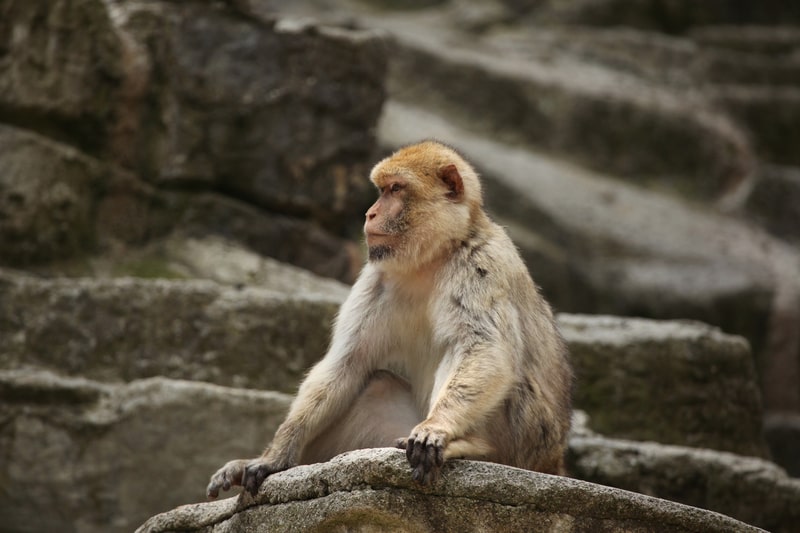
54. There are a number of famous monkeys in pop culture, including Curious George, Abu from Aladdin, and Jack from the Pirates of the Caribbean movie. and the Monkey Island video game series.
55. The monkey is the ninth animal in the Chinese zodiac. People born under this sign are said to be intelligent, hardworking and optimistic. The most recent “Years of the Monkey” are 1980, 1992, 2004, 2016, and the next one is in 2028.
56. Did you know there was a bald monkey? The Bald Uakari are known for bright red faces and their chrome domes. It’s believed that the brighter red the face, the healthier they are, as sick Bald Uakari monkeys have appeared paler in observation.
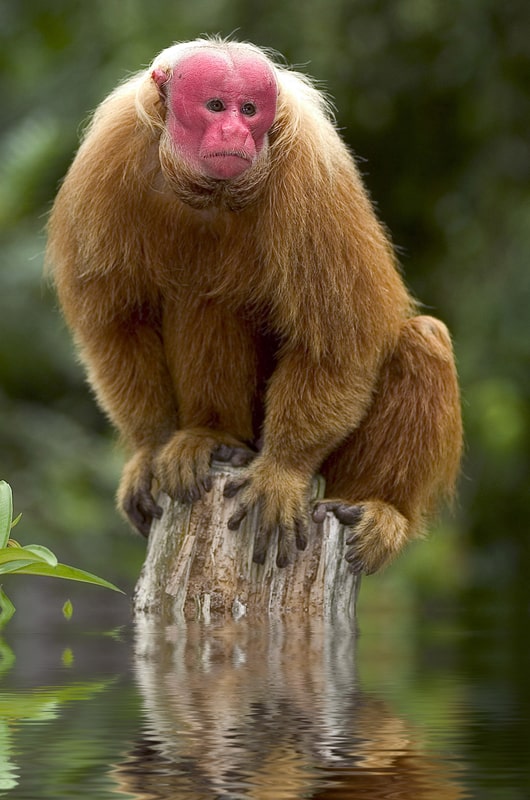
57. In Hinduism, the monkey god Hanuman is an important figure who is seen to represent wisdom, strength, courage, devotion, and self-discipline. Some scholars even believe this Hindu god was at least a partial inspiration for the Monkey King Sun Wukong, one of the most famous and important fictional characters in Chinese epics.
58. The Japanese macaque, or “snow monkey,” is one of the most well-known monkey species due to its extremely unique habitat of living in cold, snowy conditions. They also have the ability to thrive in the hot summers, making them an unusually versatile monkey.
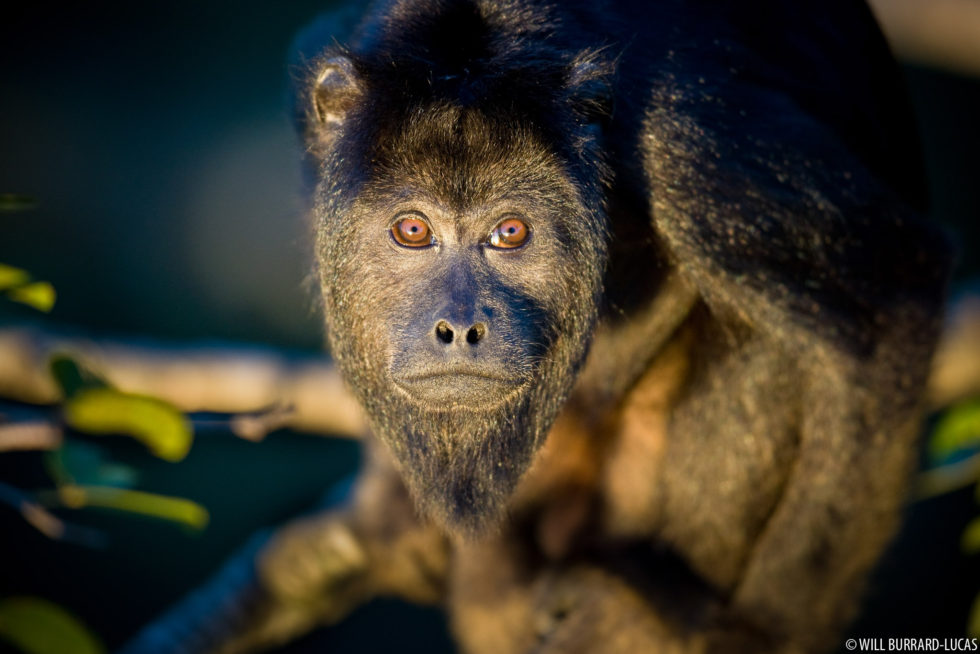
59. Howler monkeys are the loudest of the monkeys, and in fact have one of the loudest calls of any mammal. Humans can hear a howler monkey’s call from up to three miles away. Needless to say a group of them challenging one another can become a real nuisance by a village.
. . . continue reading facts about monkeys on the next page
